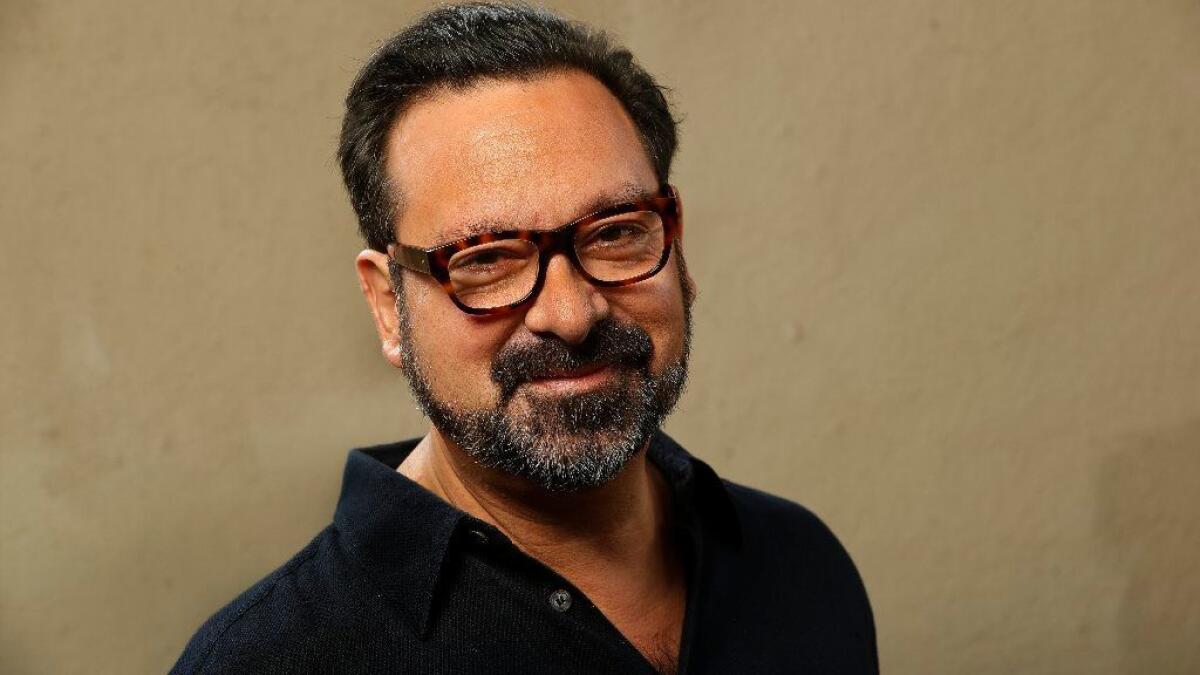âLoganâ director James Mangold on writing a superhero film without the trappings of the genre

Several years ago, after completing work on âThe Wolverine,â Hugh Jackman and I found ourselves facing the prospect of making one final film about this character. It would be Hughâs last after a 17-year run.
Hugh was hesitant to commit to another if it wasnât special in some way, and I shared his reticence as I was yearning to return to more human-scaled films like âGirl, Interruptedâ or âWalk the Line.â
I started to feel this film should be about whatever most frightened Logan. This certainly wasnât a new villain (he had seen them all), nor the end of the world (which he might relish), and it wasnât his own demise (which, it seemed to me, Logan had been looking forward to for a hundred years now). It struck me that the only thing Logan was truly terrified of was... intimacy⌠vulnerability... emotional dependency. I wondered whether Loganâs nemesis in this film could simply be love in its purest form: family.
WATCH: Video Q&Aâs from this seasonâs hottest contenders Âť
A series of ideas suddenly fell upon me. Finding Logan living with Charles Xavier (Professor X), caring for this ailing âfatherâ in hiding across the border, probably because the real border had become such a focus of political attention. Mirroring what many families are going through with their elders, I posited that Charlesâ most powerful mutant asset, his mind, had degenerated and become out of control and dangerous to anyone around him. I imagined Logan kept Charles in a metal tank to keep his lethal brain waves from hurting civilians.
Into this situation, a daughter could arrive in the form of X-23, a young female clone of Logan, a wonderful character established in the comics and on an animated show but never given screen time. She could double the pressure on Logan to step up as the leader of this ragtag family.
I imagined Logan struggling to make a living as an Uber driver. Why an Uber driver? I donât know. I think I wanted him to have a big stretch limo so perhaps the movie could become a kind of â70s road picture, like Eastwoodâs âThe Gauntlet,â which at this point was becoming a real inspiration.
I wrote a sort of âTaxi Driverâ opening, a menagerie of characters stumbling into his stretch, one or two who perhaps recognize him. I wrote a Travis Bickle-like voice-over culminating with a fatalist noir line â âNature made me a freak. Man made me a weapon. And God made it last too long.â There were a lot of good ideas, it was an interesting stew, but I was struggling to fashion it into a workable story.
This is where both screenwriters, Michael Green and then my longtime friend and collaborator Scott Frank, came into play to help me break out these ideas, enriching and shaping them into a full screenplay.
The effort to carve out this narrative without resorting to an aggressive plot or supervillain became an exercise for each of us in resisting the gravitational pull of more standard âsuperheroâ plot lines. Scott was instrumental in pushing even more severe limits to our heroesâ powers, so our story efforts would be forced further toward the intimate from the large.
One day, early on, Scott came to me with a passage he had written which was less about what the movie was, than about what it wasnât. It was awesome and it went like this:
âBasically, if youâre on the make for a hyper choreographed, gravity defying, city-block destroying, CG fâathon, this ainât your movie. In this flick, people will get hurt or killed if they get hit with something big and heavy like, say, a car. Should anyone in our story have the misfortune to fall off a roof or out a window, they wonât bounce. They will die.â
In the weeks that followed, almost everything we wrote became infused with a conscious effort to undermine some of the norms of comic book films: If these characters are usually strong, ours would be weak, powers failing. If their motives are righteous, ours will be selfish or fearful. If most of these films exist in a green screen world of landmark locations, ours will exist along the dusty roads of Americaâs heartland. If most heroes embrace the predicament of a young child in jeopardy, ours will hesitate. If these heroes usually take pride in their past accomplishments, ours will view their legacy with more jaundice, perhaps wondering if any of these previous battles were worth the sacrifices, or even real.
The point wasnât just to be rebellious for its own sake, but to take away the life preserver of spectacle and bombast and see if these unique characters could hold a film simply on the basis of who they were, their pain, evolving relationships and vulnerabilities. Hugh and the studio were deeply supportive throughout, offering us a huge amount of trust with the jewel of their franchise, even allowing us to make the film R rated and drop the most recognizable word (âWolverineâ) from the title, both choices to the dismay of their marketing departments.
Making âLoganâ was deeply gratifying, not merely because of the embrace of audiences and critics, but also because the process itself was so free and independent for an expensive film with profound expectations upon it. To have our efforts honored by the WGA and the academy and others is a wonderful recognition for an innovative genre that, like other more popular forms, has often been overlooked.
More to Read
From the Oscars to the Emmys.
Get the Envelope newsletter for exclusive awards season coverage, behind-the-scenes stories from the Envelope podcast and columnist Glenn Whippâs must-read analysis.
You may occasionally receive promotional content from the Los Angeles Times.










